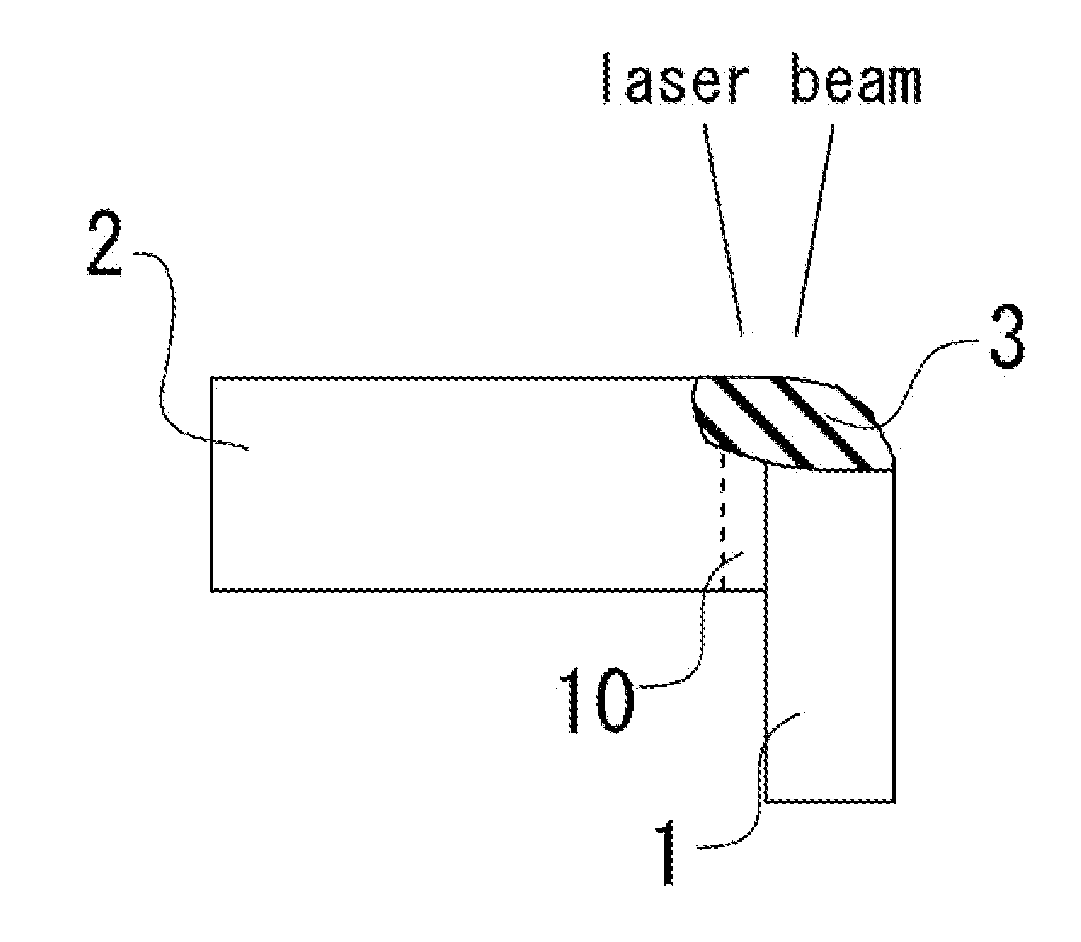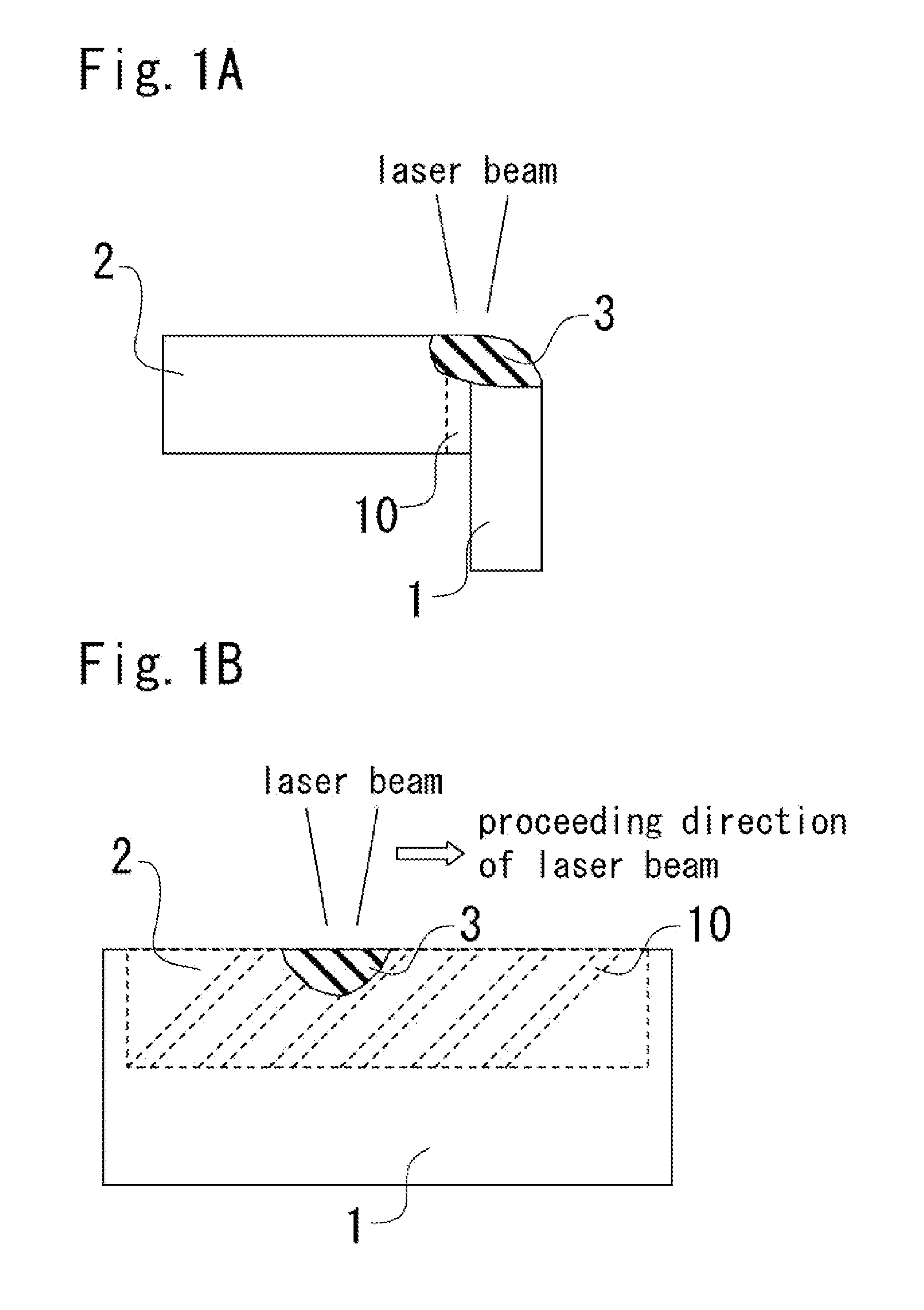Method for manufacturing sealed cell
a cell and sealing technology, applied in the direction of cell components, conductors, cell component details, etc., can solve the problems of reducing cell performance, generating spatters, cracks in the welding spot, etc., and achieve the effect of excellent sealing properties and high ruggedness
- Summary
- Abstract
- Description
- Claims
- Application Information
AI Technical Summary
Benefits of technology
Problems solved by technology
Method used
Image
Examples
Embodiment Construction
[0046]An embodiment of the present invention will be described in detail with reference to drawings as follows. FIGS. 1A and 1B show a method of the present invention for weld-sealing a cell; FIG. 1A is a longitudinal sectional view of the joint, and FIG. 1B shows the joint seen through from the front surface of the outer can 1.
[0047]According to the method of the present invention, a cell is manufactured by joining a sealing body 2 to the opening of an outer can 1, and welding the joint using a laser beam as shown in FIGS. 1A and 1B. The sealing body 2 has a plurality of grooves 10 on its outer peripheral surface. The grooves 10 are communicated with the upper and lower ends of the sealing body 2. As a result, the deepest part of a melting section 3, which is formed when the materials of the outer can 1 and of the sealing body 2 are melted by the laser beam, is located below the upper ends of the grooves 10.
[0048]This allows the gas 4 generated by the heat of the laser beam to smoo...
PUM
| Property | Measurement | Unit |
|---|---|---|
| widths | aaaaa | aaaaa |
| distance | aaaaa | aaaaa |
| width | aaaaa | aaaaa |
Abstract
Description
Claims
Application Information
 Login to View More
Login to View More - R&D
- Intellectual Property
- Life Sciences
- Materials
- Tech Scout
- Unparalleled Data Quality
- Higher Quality Content
- 60% Fewer Hallucinations
Browse by: Latest US Patents, China's latest patents, Technical Efficacy Thesaurus, Application Domain, Technology Topic, Popular Technical Reports.
© 2025 PatSnap. All rights reserved.Legal|Privacy policy|Modern Slavery Act Transparency Statement|Sitemap|About US| Contact US: help@patsnap.com



